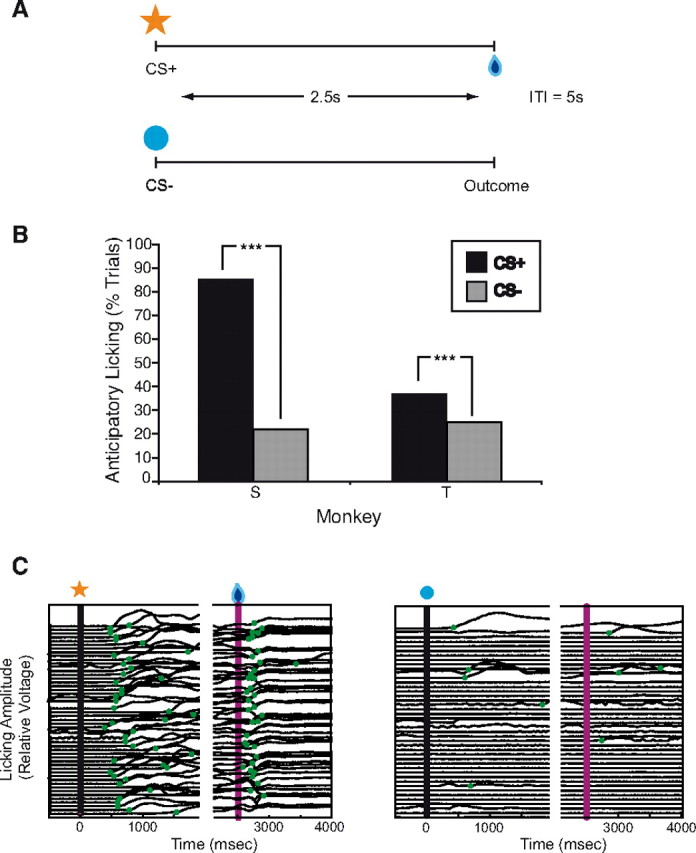Figure 1.

Classical conditioning paradigm and behavioral results after isotonic MnCl2 injections. A, Schematic of the classical conditioning paradigm. Each trial consisted of the presentation of a visual stimulus on a computer screen followed 2.5 s later by the trial outcome. In CS+ trials, the visual stimulus was an orange star, and the outcome was a liquid reward. In CS− trials, the visual stimulus was a blue circle, and the outcome was no reward. Trials were presented in random order. Intertrial intervals (ITI) were 5 s in length. B, Percentages of CS+ (black bars) versus CS− (gray bars) trials with anticipatory licking. Monkeys S and T showed significantly more anticipatory licking in CS+ trials, as expected. C, Licking amplitude (changes in voltage measured by a strain gauge) as a function of time in a single behavioral session for monkey S. The left shows all of the CS+ trials in this session; the right shows all of the CS− trials. The timing of significant increases in amplitude is marked with green circles. Anticipatory licking began >1 s before trial outcome in the CS+ trials but not in most of the CS− trials. Licking also increases after the delivery of the reward in CS+ trials.
